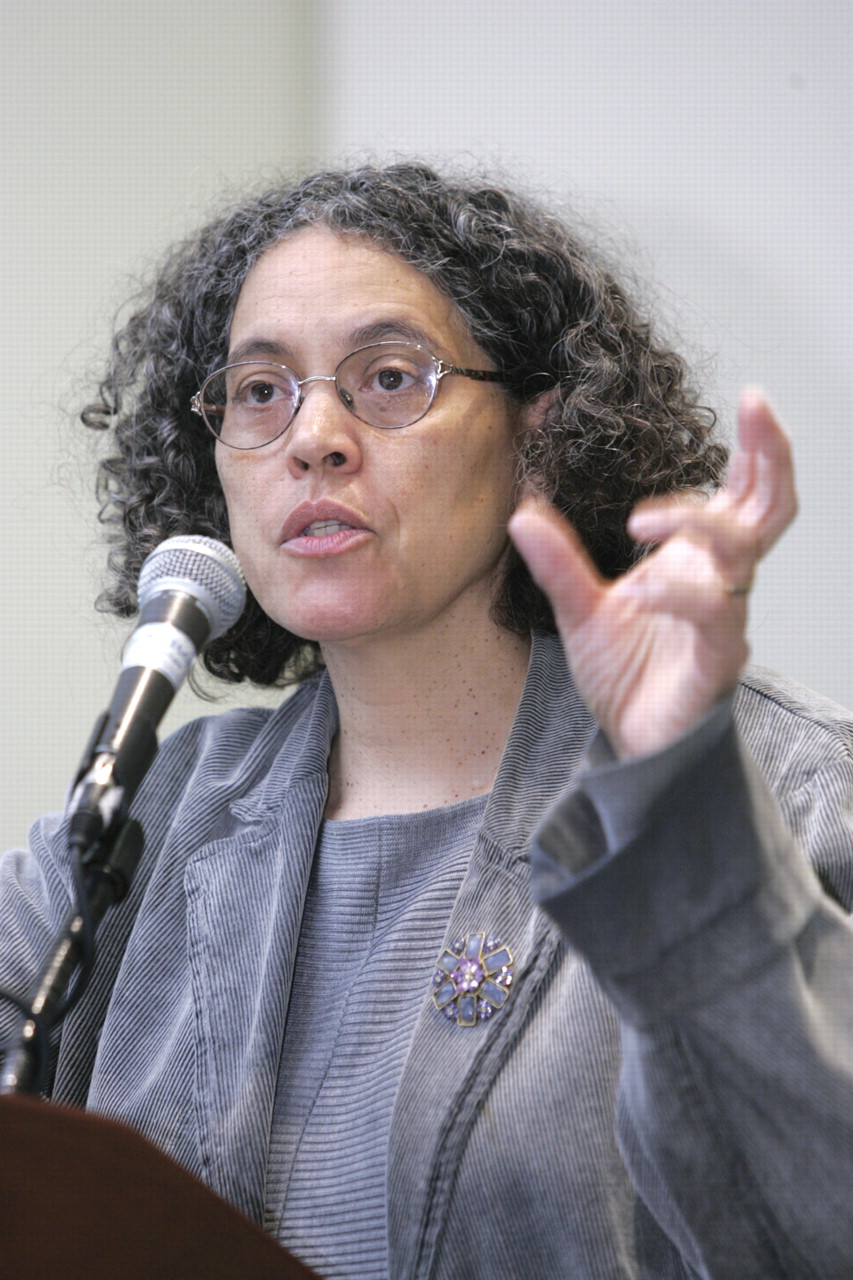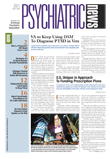The aftermath of 25 years of “urban renewal” in American cities testifies to the enormous power of place in individual and social stability, and to the profound psychosocial implications of displacement.
So said psychiatrist Mindy Thompson Fullilove, M.D., in a lecture at APA's 2006 annual meeting in Toronto.
The American experiment in urban renewal and the displacement of entire neighborhoods in cities across the country carries profound lessons for how to respond to the destruction of the Gulf region by Hurricane Katrina, she said.
“There is much to be done in the management of displacement, and psychiatrists have a very fundamental role in the process,” Fullilove said. “For the suffering person who comes to us and needs our care, it is essential to place the life story of this person who has suffered from displacement in the larger context of where the person came from, why the person was forced to move, and where the person might possibly go.
“Whatever symptoms [such people] present with may literally be the symptoms of this rupture in their life pattern, and the most important thing you can do is to reorient them to the task of living.”
Regarding the reconstruction of the Gulf region in the aftermath of Hurricane Katrina, Fullilove said psychiatrists can also play a part in helping to generate political will to commit adequate resources—a commitment that she said needs to be comparable in scale to the Marshall Plan to rebuild Europe after the destruction of World War II.
“The failure to have a reasonable plan after Katrina is at the heart of illness and destruction that are going to affect generations of people,” she said.
Fullilove is a research psychiatrist at the New York State Psychiatric Institute and a professor of clinical psychiatry and public health at Columbia University. She has conducted research on AIDS and other epidemics in poor communities, with a special interest in the relationship between the collapse of communities and decline in health.
She has published widely and has written two books, Root Shock: How Tearing Up City Neighborhoods Hurts America and What We Can Do About It (One World/Ballantine Publishers, 2004) and The House of Joshua: Meditations on Family and Place (University of Nebraska Press, 1992 and 2002).
Urban Renewal Can Be Ethnic Cleansing
Fullilove's observations were drawn from her study of the aftereffects of urban renewal, the effort from 1949 to 1973 to rebuild America's inner cities by uprooting long-established, largely poor, predominantly African-American communities. This effort was and is still widely regarded as“ progress,” but Fullilove said it could more properly be described as a form of ethnic cleansing.
During that period, 2,532 urban renewal projects were undertaken, two-thirds of which were directed toward African-American neighborhoods at a time when blacks were just 12 percent of the U.S. population; in this way, African Americans had five times the risk of being affected by displacement than should have been expected on the basis of population, she said.
“There was a great desire to get African Americans away from downtown areas,” Fullilove said. In the place of their indigenous, organic neighborhoods were built office buildings, tourist attractions, cultural institutions, and sports arenas.
As an example, she showed before and after photographs of the Hill District, an African-American neighborhood in Pittsburgh that was uprooted to make room for, among other buildings, the Mellon Arena, home to the Pittsburgh Penguins hockey team.
“There is a real clash of who wants the land for what,” she said. “This is a fundamental clash in all episodes of displacement. Whoever has the power to write the history of displacement will say that whoever used to have the land used it badly and that they will use it well. There is no narrative of displacement that does not contain this story line.”
Communal Relationships Destroyed
Yet these same neighborhoods were home to a rich culture and a crucial web of family and communal relationships that have been irrevocably lost. Fullilove illustrated her remarks with photographs taken by Charles“ Teenie” Harris, an African-American photographer who left behind a remarkable photographic record of everyday life in the Hill District: dances, parades, checkers games, customers in a barbershop, and casual neighborhood gatherings on sidewalk stoops.
It was in African-American neighborhoods like the Hill District that jazz music also flourished. This distinctively American music was nearly lost along with the rest of the cultural heritage of uprooted neighborhoods, only to be preserved by aficionados in Japan and Europe. “In this way it became a very cerebral music, divorced from the folk culture of the ghetto,” Fullilove said. “It became a different kind of music, not the music of the community, but the music of music lovers.”
She likened the psychological devastation of losing one's home in this way to “root shock,” the trauma suffered by plants that are uprooted from the soil that nurtures them.
“If your home was here,” she said, “you can never go home again. There are people from the Hill District whose homes were in what is now the middle of the ice at Mellon Arena. They have a feeling about where their home is, but they can never go there.”
Beyond the losses—financial and psychological—of the displaced populations, Fullilove emphasized that the uprooting of communal relationships has a profound impact on the larger society.
She drew on the work of sociologist Mark Granovetter's 1973 article“ The Strength of Weak Ties” to illustrate how individuals are typically bound by both “strong ties”—those of race, religion, or tribe—and “weak ties,” relationships with individuals forged in the day-to-day course of living: the barber, the waitress at the coffeeshop, the cashier at the grocery story.
She noted that when people lose the web of relationships that comprise their weak ties, they fall back on the strong— and potentially socially divisive—ties of race, religion, and tribe.
“It was precisely these weak ties that were severed in the uprooting of neighborhoods,” Fullilove said. “Those weak ties are the relationships that get people jobs and that link them to the political system. They spread across ethnic groups, and when those cementing relationships are broken, the emergence of tribal hostility and factionalism after displacement is absolutely to be expected.”
She also cited the work of social psychiatrist Alexander Leighton, M.D., to stress that as social bonds are ruptured, the overall social organization changes. It was Leighton who posited two theoretical extremes—the model supportive community and the loose collection of individuals—and said that as a society moved along the continuum away from the model toward the loose collection, it could expect to see more and more mental illness.
As the weak ties that bind individuals to one another have been ruptured, Fullilove said, American society has moved more and more toward the extreme of the loose collection of individuals. She added that Leighton pointed out 50 years ago that status and wealth do not protect individuals in a society that is moving toward a mere collection of individuals.
“The well-to-do in a collection have worse health than the poor do in a model supportive community,” she said.
Fullilove noted that recent research appears to bear out this dismal prediction, citing a report in the May 3 Journal of the American Medical Association (JAMA) showing that middle-aged white people in America have worse health overall than white people of the same age in England, despite much higher health care spending here.
In the categories of diabetes, blood pressure, and cancer, England's poorest citizens—those in the lowest one-third of income levels—did better than the richest one-third of Americans.
Importantly, as the state of social organization changes, individuals within the society adopt new, more aggressive behaviors to fend for themselves. She cited Geoffrey Canada's 1996 book Fist, Stick, Knife, Gun, which showed the downward spiral of urban violence from fistfighting to guns.
“The change in the state of organization has made the gun not optional,” she said. “In a state where everyone has a gun, everyone has to have a gun. The tragic part of this decline in social relationships is that it takes much more aggressive behavior to take care of yourself. In a well-organized community, there are established ways of sharing. In a disintegrated community, you have to fight with someone else.”

